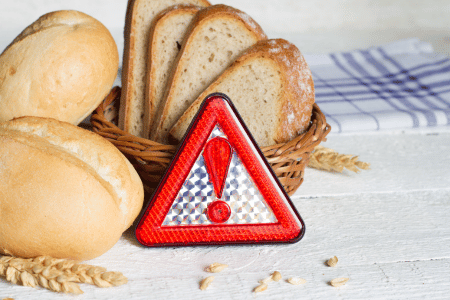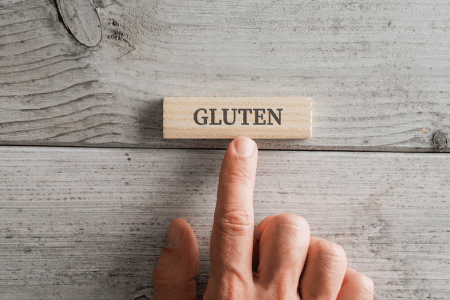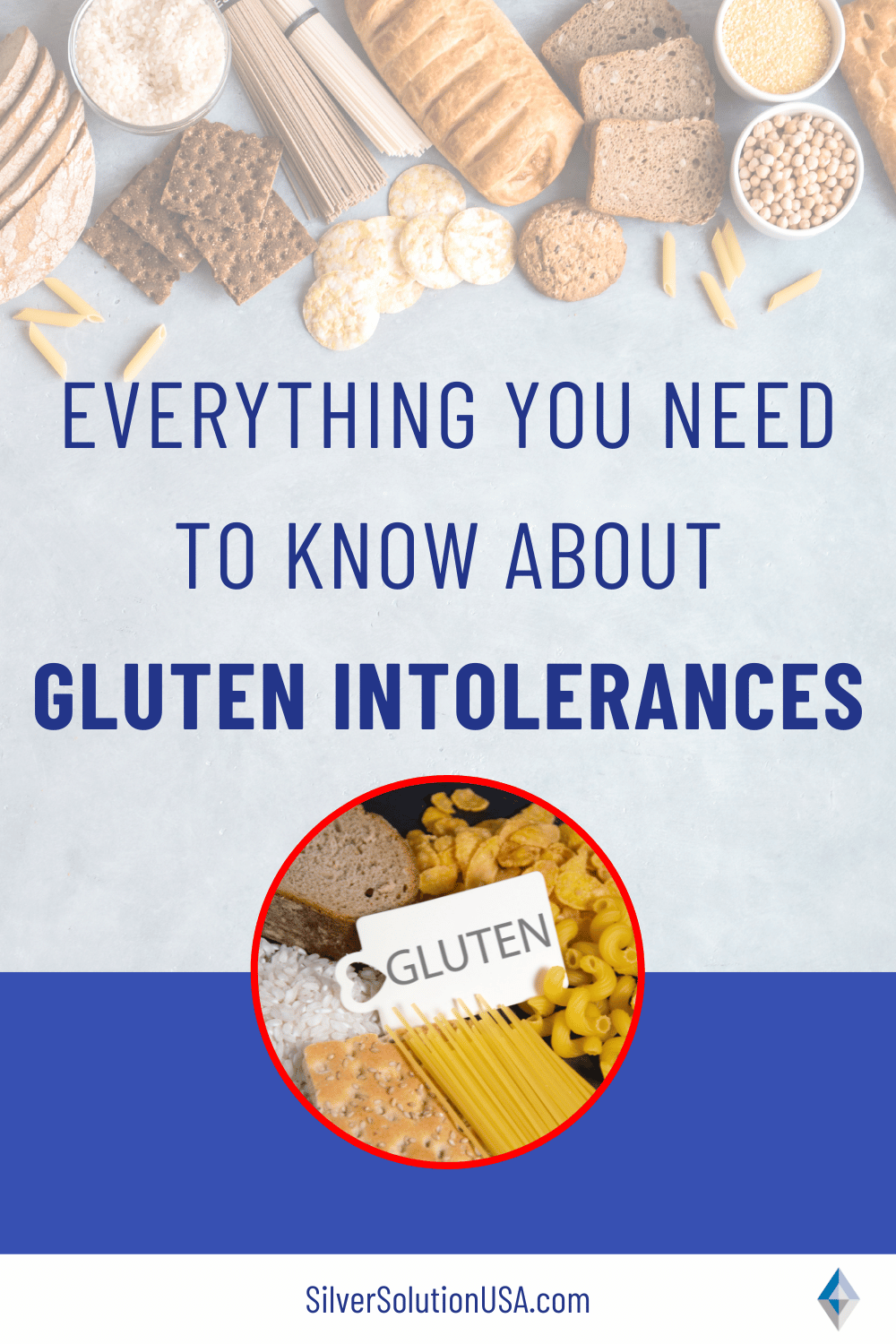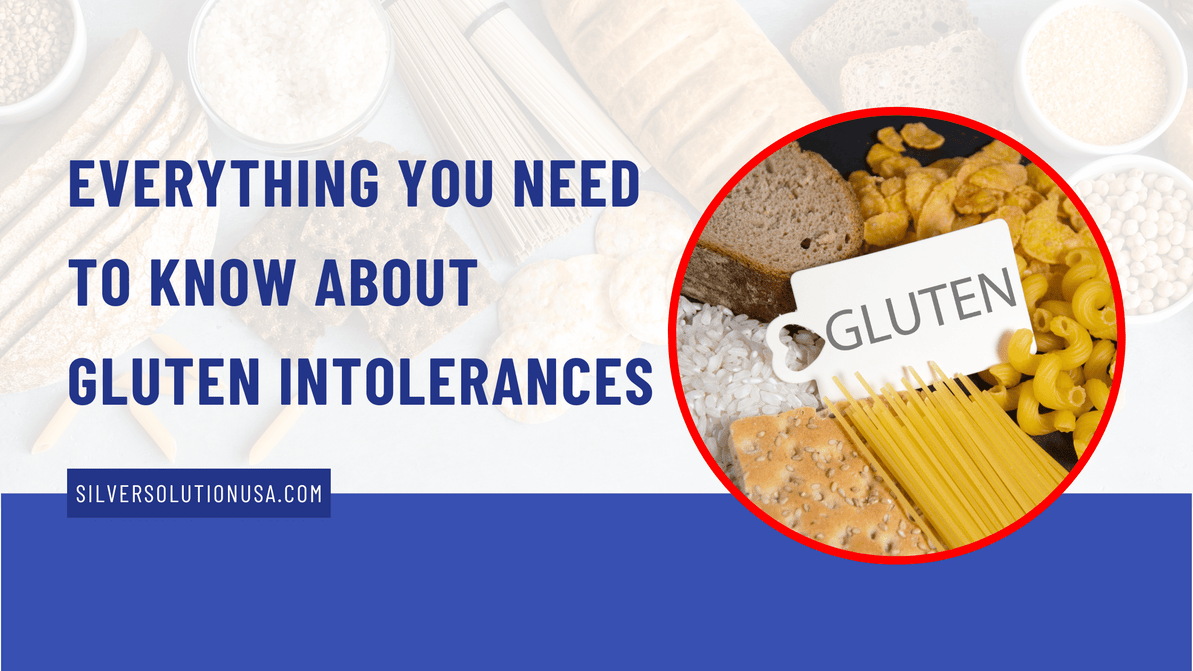Everything You Need to Know About Gluten Intolerances
There’s a new trend that is taking over the health & wellness world: eating gluten-free. Many are trying to make gluten the big bad, while others say this is nothing but a fad. (See what we did there?) The reality is more and more people are struggling with gluten intolerances, and their symptoms can vary from mild digestive disturbances to serious and even life-threatening issues. Here’s everything you need to know about gluten intolerance.
What is gluten?
Gluten is a type of protein found in wheat, barley, spelt, and rye. Think of it as the glue that holds these grains together when used for things like bread and pastries. It is also the component that gives bread that chewy texture we all love.
In theory, it sounds harmless. Plus, whole grains like wheat can be good for your health. Unfortunately, some people do not react well to it. Those with celiac disease have it worse, but other types of intolerances and allergies can make it hard for some to consume gluten.

Who needs a gluten-free diet?
When thinking about gluten intolerances, most people think of celiac disease. This is indeed the most severe form. But it isn’t the only one. Let’s take a closer look at each condition/allergy.
Celiac disease
This is an autoimmune condition in which the body mistakes gluten for a foreign threat. And as with any threat, the body will immediately react and try to protect you.
But because gluten is not an actual threat to your body, this reaction can cause a lot of harm. It can damage the gut wall, leading to nutritional deficiencies and severe digestive issues. Symptoms include:
- Constipation or diarrhea
- Acute stomach pain
- Bloating
- Unexplainable weight loss
- Skin rashes
- Anemia
- Depression
- Fatigue
As you can tell, these symptoms are not unique to celiac disease, so the condition can’t be diagnosed based on symptoms alone. An accurate diagnosis should include blood tests to look for specific antibodies that suggest your immune system is reacting each time you eat gluten.
Sometimes, an internal biopsy is required for a definitive diagnosis. This looks for damage in the small intestine, specifically to the villi, which would clearly indicate celiac disease.
People with this condition have the most restrictive diet. You’ll need to avoid foods that contain gluten directly, such as wheat or rye, and any foods with traces of gluten. That often means avoiding processed foods as they may be contaminated and even avoiding eating out unless you go to a certified gluten-free place.

Non-celiac gluten sensitivity (NCGS)
NCGS is gaining more and more attention. About 0.6%-13% of people have this type of gluten sensitivity. Unlike celiac, no definitive tests can show someone has NCGS. In other words, the number of people struggling with it could be much higher.
The symptoms are very similar to those of celiac disease. The most prevalent seems to be bloating, stomach aches, skin rashes, and fatigue, but other issues are not excluded.
People with NCGS don’t test positive for celiac or wheat allergies, yet most of their symptoms seem to be related to gluten. It is worth noting that other irritants, such as FODMAPs, could cause the same symptoms. Under a doctor’s supervision, elimination diets can often help you pinpoint the cause of your symptoms.
If you have NCGS, you must follow a diet similar to those with celiac. However, most people in this category are fine with traces of gluten.
Wheat allergy
Wheat allergies rarely come with digestive symptoms. Their first symptoms often include:
- Hives
- Nasal congestion
- Headache
- Difficulty breathing
Severe cases can experience anaphylaxis, a life-threatening allergic reaction.
Wheat allergy is more common in children, but around 65% of them outgrow it by the age of 12. Those with this type of allergy don’t need to follow a traditional gluten-free diet; they’ll need to avoid wheat in any form, including bread and pasta.
Gluten ataxia
Like celiac, ataxia is an autoimmune disorder due to which your immune system attacks the nervous system when you eat gluten. This results in various neurological symptoms, such as motor control issues and loss of balance or coordination.
Gluten ataxia is more common in people over 50; studies suggest it accounts for about 15% of ataxia cases.
A strict gluten-free diet will be needed to treat the symptoms by avoiding both foods containing gluten directly and traces.
Foods to avoid if you have any gluten intolerances
Foods containing wheat, barley, spelt, or rye should be avoided if you’re on a gluten-free diet. Other typical sources of gluten include semolina, malt, and brewer’s yeast. That means saying goodbye to classic bread, pastries, pizza, breakfast cereal, and even pasta.
Luckily, finding gluten-free replacements for all these foods is getting easier nowadays. Corn and rice pasta, for instance, are becoming increasingly popular.
Gluten is also common in sauces and even in some beverages like beer. In short, all processed foods may contain some gluten, so depending on your condition, be sure always to check the label.
To learn more about the benefits, risks, and challenges of a gluten-free diet, check out this article.

What are traces of gluten?
Avoiding foods that contain gluten directly is relatively easy. Stay away from anything with wheat, barley, spelt, or rye, and you’re safe. But that is not enough for some people, like those with celiac and ataxia.
In the gluten-free world, you’ll often hear the word “traces.” Some also call it “contamination.” Both refer to the same thing—food that would typically not contain gluten has been processed or cooked in a place that also prepares gluten. This results in contamination or traces of gluten on that food.
Take, for example, corn pasta. Corn does not contain gluten, so neither should pasta made of it. However, if the company that manufactured it also makes wheat pasta, it’s highly likely they used the same utensils, which will result in contamination.
The same can be true for potato chips and even things like frozen vegetables or canned foods. You can even find traces of gluten in supplements such as multivitamins, so if you need to avoid it at all costs, always read the label or talk to a pharmacist.
Unfortunately, traces of gluten are long-lasting. That’s why even in your home, you often have to give up all gluten, even if only one person has celiac disease or ataxia.
The solution? If you need to avoid traces of gluten, avoid any packaged foods that don’t have a “gluten-free” label. The same is true when going to restaurants.
You may be tempted to think you’re safe ordering a steak and veggies; unfortunately, that’s not true. If the restaurant is not specifically gluten-free or doesn’t have a dedicated gluten-free area, the chances of contamination are very high.

Why are gluten intolerances more common nowadays?
Gluten-free has not always been a thing. Ask anyone with celiac disease, and they will tell you how hard it was only 5-10 years ago. You couldn’t really buy any prepackaged foods, and there were no safe restaurants.
Now, gluten-free diets are more and more common. And it is not just a fad. People are reporting real gluten intolerances that become clearer once they quit gluten and start feeling much better. So why is that? Evidence points us toward a few answers.
Increased awareness and availability of tests
People have struggled with bloating, unexplained weight loss, fatigue, skin rash, and more for a long time. But there was little awareness that gluten can cause harm beyond celiac disease or ataxia.
Now we know better, and people can get tested. Doctors and nutrition specialists can guide you through an elimination diet that will show you exactly what foods you’re sensitive to. This leads to more and more people finding out their bodies aren’t doing well on gluten and the subsequent rise of gluten-free diets.
Increased consumption of processed foods
We are eating more processed foods than ever. And we’ve been doing so for a few decades now. Sadly, the additives and chemicals may be catching up with us and causing changes to the gut microbiota, which can lead to food intolerances and other issues. Studies in the area are ongoing, but most people agree a connection exists.
Changes in wheat
Over the past 100 years, there have been some changes in wheat that could explain why people are finding it harder today to deal with gluten than they did in the past.
A 2020 study analyzed wheat varieties from 1891 to 2010. Researchers found modern types contain less protein than older ones. Gluten content, however, has stayed the same.
We do not yet fully understand how each protein change affects the human body because there isn’t enough research. The little we know shows us this could be a potential factor in the increase in gluten intolerances, though not overwhelming.

The bottom line
Gluten is a protein found in wheat, barley, rye, and spelt. While whole grains can benefit your health, and most people have no problem with gluten, for some, it can cause some serious issues.
People with celiac disease and ataxia, two autoimmune conditions, have it hardest and need to follow a strict gluten-free diet that removes even the slightest traces. Those with non-celiac gluten sensitivity can have many of the same symptoms of celiac but may be luckier in the diet department, as traces are tolerated in most cases.
Wheat allergies are a special case. They can be very serious, even life-threatening, but they don’t require a gluten-free diet, just a wheat-free one.
Talk to a doctor if you suspect any gluten intolerances, and if you want to try a gluten-free diet for its other health benefits, make sure you’re getting all your nutrients.
Did you know that we have a Gluten-Free section on our website? Check it out here!

Health/Medical Disclaimer
This blog post does not provide health or medical advice. This blog post is for informational and educational purposes only and is not a substitute for professional health or medical advice. Before taking any actions based upon such information, we encourage you to consult with the appropriate medical and healthcare professionals. We do not provide any kind of health or medical advice. The use or reliance of any information contained on this blog is solely at your own risk.
Sources
https://onlinelibrary.wiley.com/doi/10.1111/jgh.13703
https://www.ncbi.nlm.nih.gov/pmc/articles/PMC6040035/
https://www.statpearls.com/ArticleLibrary/viewarticle/19095
https://www.ncbi.nlm.nih.gov/pmc/articles/PMC6182669/
https://onlinelibrary.wiley.com/doi/full/10.1111/nmo.13332
https://bmcgastroenterol.biomedcentral.com/articles/10.1186/s12876-020-01390-0
https://www.sciencedaily.com/releases/2020/08/200811120112.htm
Recent Posts
-
Are sunscreen ingredients harmful?
Sunny days can bring a lot of fun. Going out for a swim, spending time in nature, or relaxing on the …18th Mar 2024 -
The Veggie Debate: Does Cooking Vegetables Destroy Nutrients and the Best Ways to Cook Them
Vegetables are one of the healthiest foods you can choose. Some people downright hate them, while so …4th Mar 2024 -
Best Foods for COVID Recovery and Prevention
A few years ago, a new virus took the world by surprise. COVID-19 may look like the flu on the surfa …19th Feb 2024





